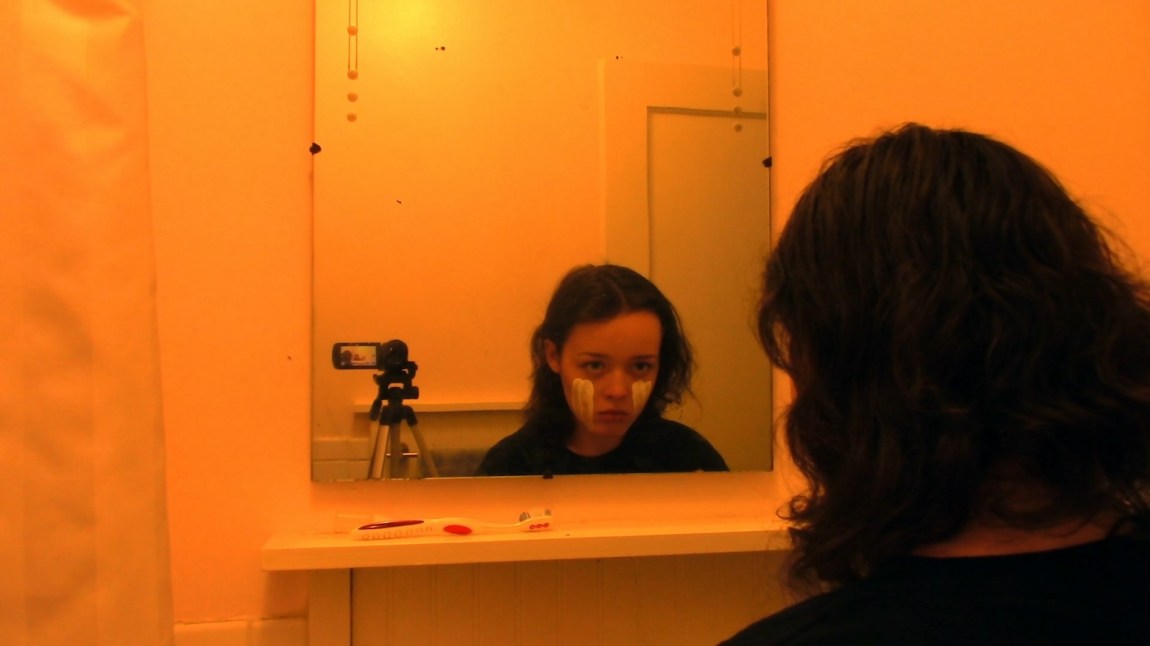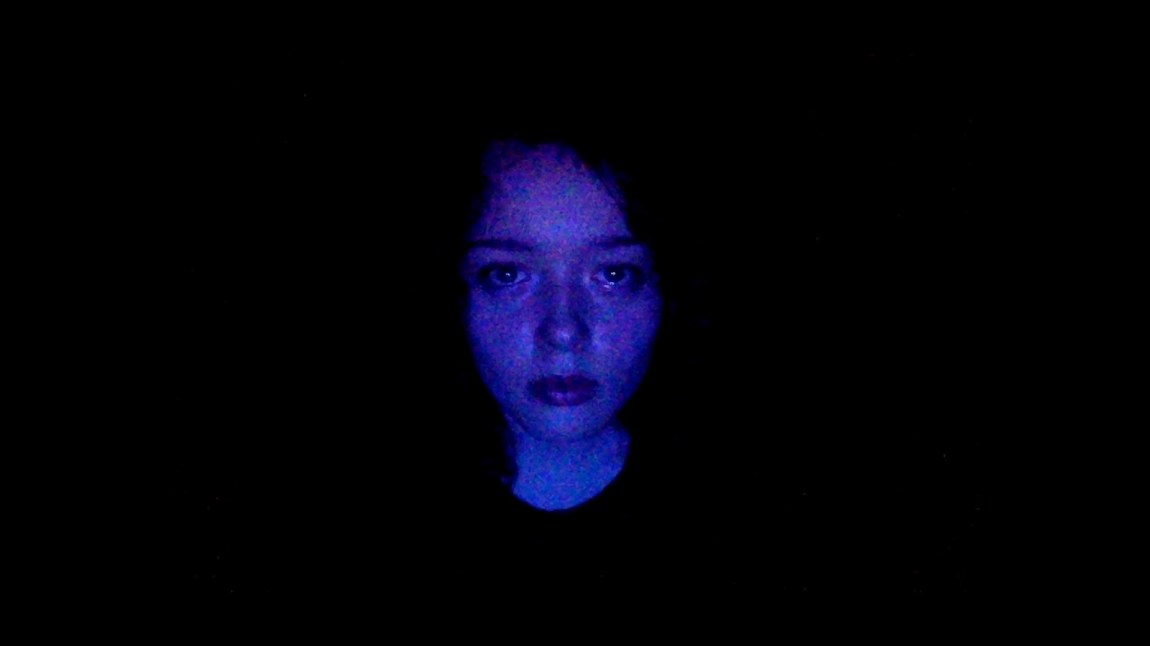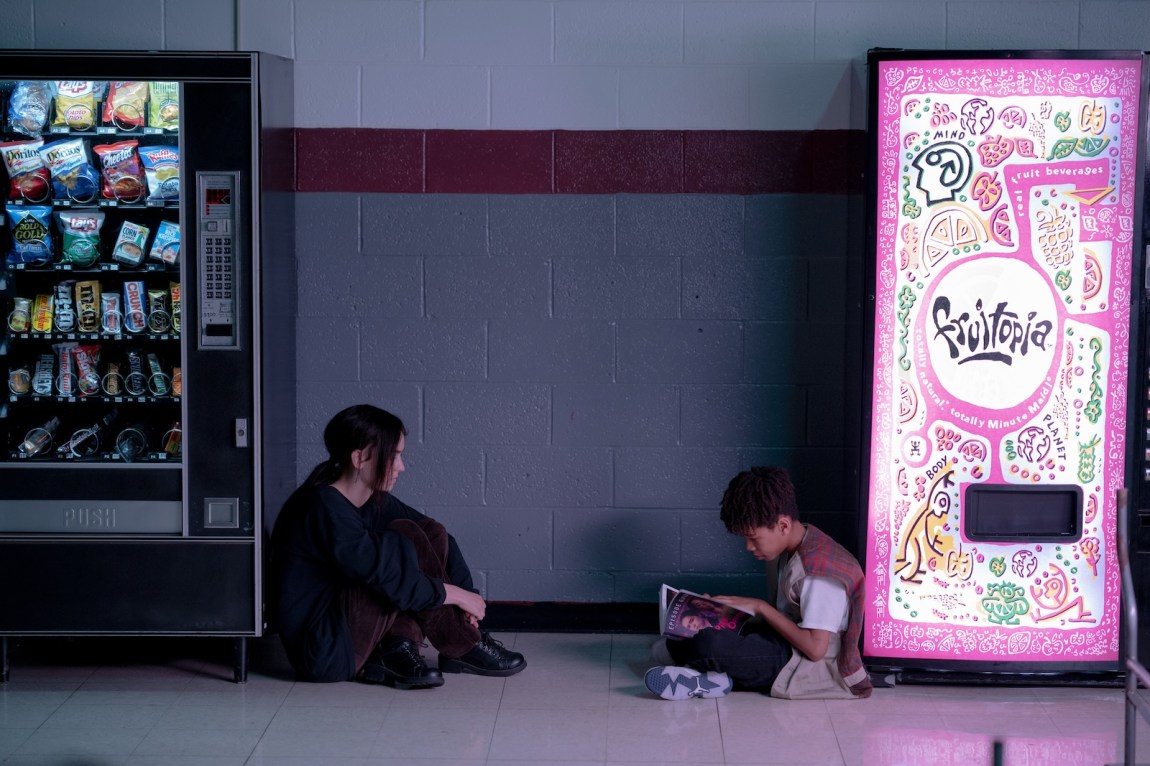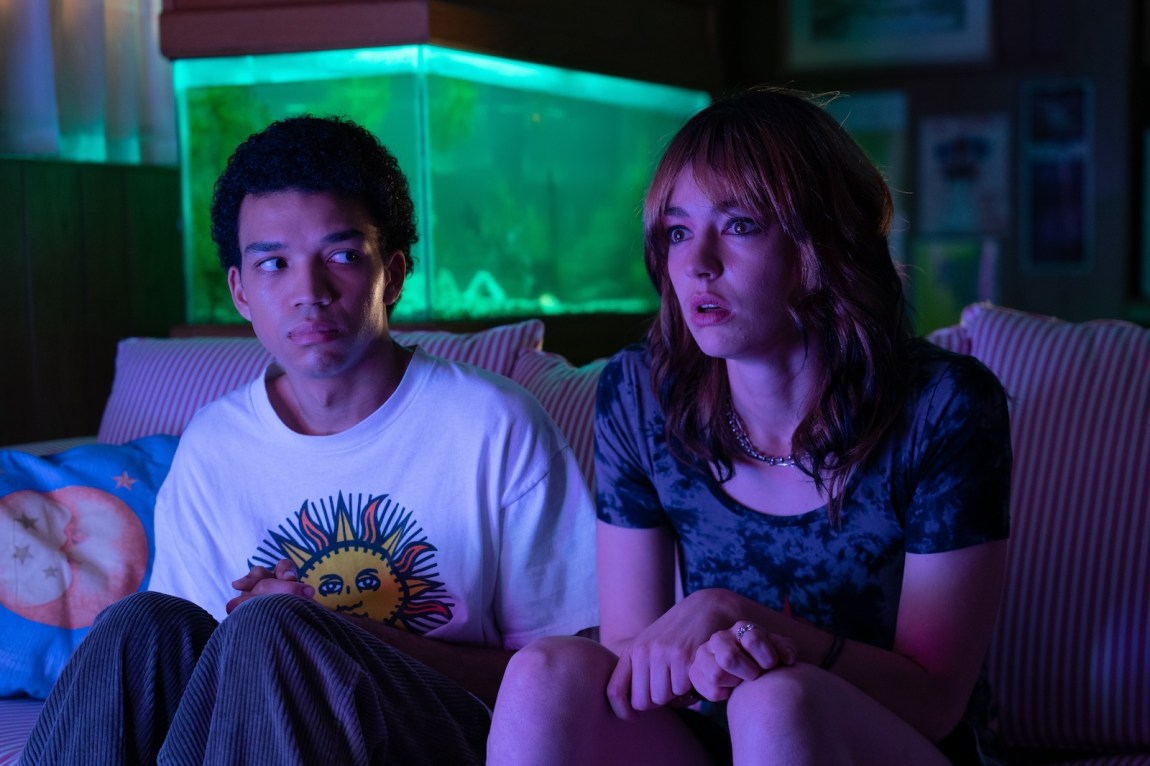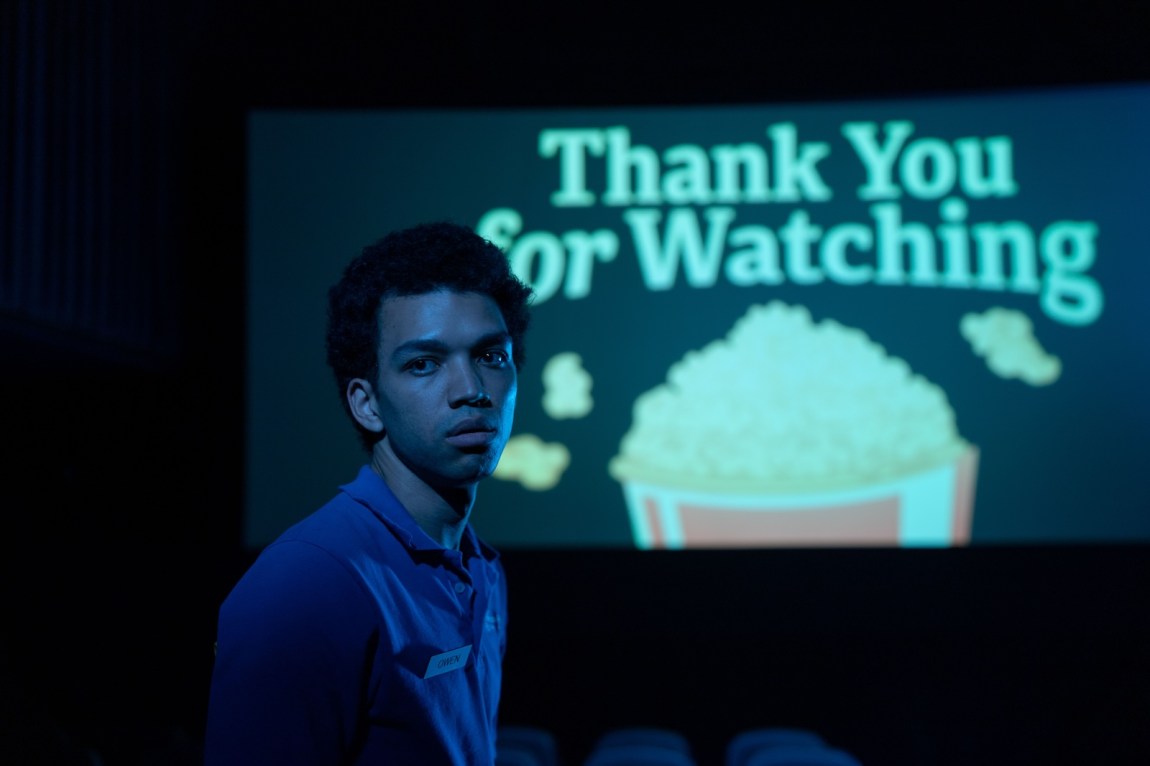What kind of place is the Internet? A few years ago, an essay called “The Dark Forest Theory of the Internet,” by Yancey Strickler, one of the founders of Kickstarter, started getting passed around online. In it, he observed that as the publicly accessible Internet gets more hostile, besieged by “the ads, the tracking, the trolling, the hype, and other predatory behaviors,” people are retreating to safer regions: “newsletters and podcasts…Slack channels, private Instagrams, invite-only message boards, text groups, Snapchat, WeChat, and on and on.” There, in the shadows, under “psychological and reputational cover,” we are safe again to “be ourselves.”1
Strickler’s account seems more accurate by the month. But his central metaphor is slippery: the “dark forest” is at first the public Internet, which gets quieter as users go into hiding. Within a few paragraphs, however, those hiding places become “dark forests” as well, as if users are fleeing from forest to forest, or finding new ones hidden, fractal-like, in the depths of the first. He also has an oddly sunny view of darkness. As any reader of fairy tales knows, dark forests are places of obscurity, but not of safety. They are full of perils and deceptions, powerful forces and strange opportunities. People don’t just hide there—they change, and are changed.
Watching Jane Schoenbrun’s first two films, I began to think that Strickler’s idea was bigger, and truer, than he seemed to realize. A Self-Induced Hallucination (2018) and We’re All Going to the World’s Fair (2021) are very different films; the first is a documentary composed entirely of YouTube clips, the second a horror-tinged work of fiction. Yet they share an intimate and unsettling vision of the Internet. This is not the Internet we tend to read about, the one of cacophonous distraction, of memes and scams and fits of cancellation; nor is it the mundane one of work e-mails and glassy-eyed Googling. It is instead a kind of exteriorized inner life, a place of wonder and terror, where wishes come to life, where the line between who you are and who you pretend to be can blur or disappear. Schoenbrun’s films are fairy tales of this dark, enchanted Internet, journeys into its murk.
We’re All Going to the World’s Fair seems, at first, like it might be a fairly standard Internet-focused horror movie, a successor to Pulse (2001) and Unfriended (2014) and other stories of haunted computers. Casey, a teenager living in a bleak, unspecified corner of America, becomes fascinated with something called the “World’s Fair Challenge,” in which people complete a brief ritual—it involves repeating “I want to go to the World’s Fair” a few times and smearing your blood on the computer screen—and then document how it affects them, mainly by posting online videos: they feel sick, perhaps; their skin grows hardened and flaky; their behavior turns erratic, even violent. After Casey completes the ritual, she too reports changes: she feels like she is watching herself from across the room, and she has fits, tearing up beloved possessions and drastically altering her appearance. Before long she is drawn into a relationship with a mysterious stranger, another participant in the “game,” who contacts her online.
World’s Fair never quite becomes scary in any straightforward way. Instead it creeps along in careful, unnerving ambiguity, without revealing whether Casey’s behavior is a show she puts on for her videos, or something she tries to convince herself is real, or something actually happening, or some mixture of the three. What is clear is Casey’s extraordinary loneliness—we see her interact with another human being in person just once—and her bashful yearning to connect, to join in, however twisted the endeavor might seem.
The Internet is presented explicitly as the vector for dangerous forces and implicitly as the only source of warmth in Casey’s life. (There is a glimpse of her father’s assault rifle, but never of him.) At one point she soothes herself to sleep with an ASMR video projected on the wall: an image of comfort and alienation at once. The most disquieting idea in the film is not that she might be losing herself online, but that, if she did, she might be better off.
*
A Self-Induced Hallucination, which was created while Schoenbrun was writing World’s Fair, is its fractured real-world analogue. It is an archival collage assembled from dozens of clips from YouTube videos—some quite popular, others with just a few hundred views—related to the “Slenderman” horror character, who spread online starting in the late 2000s. There are videos and images of him (tall, thin, and faceless, always wearing a suit and often sporting tentacles), people singing songs about him, debating his nature and origins, proclaiming his reality and denouncing him as nonsense. There are children, somewhat like Casey, claiming to be haunted by him, even to the point of physical symptoms. And there are videos related to the 2014 incident in Waukesha, Wisconsin, in which two twelve-year-old girls lured a classmate into the woods and then stabbed her nineteen times (somehow nonfatally)—at the behest, they later said, of the Slenderman.
Advertisement
No grand theory of the Slenderman emerges, no direct account of why a character dreamed up for a brief post on a message board in 2009 became so popular, of why many people took joy in pretending he was real, of why two adolescents were willing to kill for their belief in him. But some things do become clear. One is that the culture surrounding the Slenderman was silly and fun, or simply embarrassing, more often than it was horrifying. Another is that even at its darkest, it pales in comparison to the cynicism of corporate media: in a film that contains snippets of the trials and interrogations of the would-be murderers, the most appalling segments are drawn from the promotion of various cash-grab low-budget movies based on the story or, even worse, from discussions of the case on TV. (If the film has a villain, it’s Dr. Drew.)
It is also apparent that Schoenbrun’s sympathies lie with the believers. In an essay published after the film’s release, the director wrote of their own adolescent involvement in an online horror community, a message board devoted to fan fiction based on the Scream movies. There they became friends with an older man—a relationship not dissimilar to the one into which Casey finds herself drawn in World’s Fair. The man told Schoenbrun, who was still in middle school, about “his struggles with depression, his recurring thoughts of suicide.” The relationship continued for most of a year, until one day the man announced that he had a new boyfriend, who was a vampire. “I remember clearly,” Schoenbrun writes, “that he said something like, ‘I’m really scared to go down this path because I don’t know what I’m becoming.’… I was pretty sure that he genuinely believed it.”
The most memorable moments of the film are devoted to a young man named Ford, who explains to the camera that he shares ownership of his body with his “tulpa”—a kind of alternate personality with a separate consciousness, brought into being via several months of “tulpamancy,” which seems to be a combination of meditation and self-hypnosis. (The word tulpa derives, rather distantly, from Tibetan Buddhism; other clips in the film present the theory that the Slenderman is another form of tulpa, manifested by the accumulated belief of all the people who learned about him online.) Ford is earnest, articulate, at first ridiculous. But as his explanation continues, it becomes unexpectedly moving. His parents sent him to a psychiatrist, naturally—but more, it seems, in response to finding out about his boyfriend than about his tulpa. Ford describes how his tulpa (who is female) helped him to overcome his loneliness and to “maintain the health and well-being of this body.” “Her wit during a suicide attempt several years ago,” he adds, “managed to preserve both of our lives.” In their essay, Schoenbrun calls Ford and his alter ego “the heroes of the film.”
*
The other thing Schoenbrun was doing while assembling Hallucination and writing World’s Fair, they have said, was “struggling to figure out I was trans.” In Imogen Binnie’s novel Nevada (2013)—which Schoenbrun is adapting into a film—the protagonist, a trans woman named Maria, writes a blog post listing “what the actual stereotypes around transsexual women should be”: the first entry is that “we are internet fiends.” The Internet offers the protection of anonymity and distance, she writes, “a safe way to talk about being trans.” It is also a place where you can “exist without this problematic body you’re stuck with.”
Neither of Schoenbrun’s first two films addresses transness directly, but both treat the opportunities offered by the Internet with unusual urgency and sympathy. Personal metamorphosis is as thrilling—sometimes as necessary—as it is terrifying. If it begins online, or finds expression there, that does not diminish its reality.
All of which makes it more than a little surprising that their new film, I Saw the TV Glow, contains not a single mention of the Internet. Set in the mid-to-late 1990s and 2000s, the film follows two queer teenagers, Owen and Maddy, who are both obsessed with the same TV show: that these bored, alienated middle-class kids would never have gone online beggars belief. There’s no reason to think this is an oversight—it’s a careful elision. A way of focusing the film, perhaps, on these two people and this one show. Or maybe one of the first signs that something in its world is very wrong.
Advertisement
The TV show at the center of their lives is a dreamier cousin of Buffy the Vampire Slayer called The Pink Opaque, in which two telepathically linked teen girls fight monsters “across the county.” When Owen and Maddy first meet, she is reading a paperback episode guide to the show, sitting on the floor of an empty school cafeteria. He’s heard of the show, seen ads for it, but never watched—it seems scary, and in any case it’s on too late, his parents won’t let him stay up. She tells him he has to see it, and eventually invites him to sneak over to her house, where they can watch together in the basement.
That is their dynamic for the rest of the film: she leads and he follows, or fails to. Maddy is several years older than Owen—he’s still in middle school when they meet, she already in high school—but the gulf goes beyond that. She is miserable and angry, desperate to get out of the suburbs, but that suffering seems to have brought with it confidence and self-awareness: she knows what she wants and whom she blames. Brigette Lundy-Paine plays her like a clenched fist. She hammers out her lines in a rushed monotone, as if racing against her own better judgment, then retreats abruptly into silence, watching for a response.
Owen, meanwhile, seems to be in permanent retreat. Justice Smith’s performance (after the first section of the film, in which Owen is played by a young actor named Ian Foreman) is awkward and mesmerizing. His face is usually rigid, his eyes staring out. He swallows almost every line; no matter how close we get to him, his voice seems muffled, as if heard through a closed door. When Maddy tells him she’s gay and asks about his orientation, he seems barely able to consider the question, let alone answer it.
The film around him is likewise strangely recessive. Schoenbrun uses an array of splashy formal devices: the cinematography moves back and forth between high-def widescreen and the fuzzy video of the TV show, sections are punctuated with colorful onscreen text, there are frequent irruptions of surrealism, Owen both talks to the camera and narrates the entire story from an unspecified point in the future. But it all feels more blunted than anarchic, at least until the desperate final minutes. We drift through a candy-colored fog, which blankets a mix of flickering nostalgia and quiet panic.
After Owen’s initial encounters with Maddy, the film quickly jumps to midway through his time in high school. His mother is dying, his father is distant and malevolent, and he and Maddy have established a wary, vehement friendship. Since he still isn’t allowed to stay up for The Pink Opaque—“Isn’t that a show for girls?” his father asks—she tapes it for him. She seems more open and expressive in the notes and doodles with which she decorates the VHS cassettes, reproduced onscreen in buzzing neon, than she can quite manage in person.
Maddy’s homelife is even worse than Owen’s. She makes an offhand reference to her stepfather breaking her nose; during one scene we can hear him and her mother fighting upstairs while she and Owen talk in the basement. “I’m getting out of this town,” she tells Owen. “I’ll die if I stay here. I don’t know how, exactly, but I know it’s true.” He agrees to run away with her but then gets himself grounded so he won’t have to follow through. She runs away on her own soon enough, leaving behind a burning TV set. As soon as she goes, The Pink Opaque gets canceled.
Here the film breaks open. We jump ahead almost a decade, to find Owen still living at home, now working a dead-end job, buried ever deeper in himself. The borders between real life and TV become more porous—he has visions of himself in the show, of the show’s characters in his world. Maddy returns, and invites Owen to meet her in a club that seems to be a location from the show, or perhaps a borderland between the show’s world and his. (In a nod to one of Nineties TV’s more charming traditions, Schoenbrun makes time here for performances by a pair of real-life bands, King Woman and Sloppy Jane—the movie’s title is drawn from a line in “Claw Machine,” the song Sloppy Jane plays, with their former bassist Phoebe Bridgers sitting in.) She begs him to escape with her this time, to flee into The Pink Opaque itself, which is “more real” than the life he’s been living, but he still can’t bear to.
The action is increasingly chaotic and disorienting, but beneath it all what’s going on is fairly obvious: Owen is trans, and hasn’t admitted it to himself. The movie never says this directly, just as Owen can never quite acknowledge it, but it offers clear hints (and Schoenbrun has been open about it in interviews). We see a stray shot of Owen trying on a dress, and at one point early on Maddy tells him, “Maybe you’re like Isabel. Afraid of what’s inside you.” (Isabel is the more femme of The Pink Opaque’s protagonists; Maddy identifies with Tara, who sports short slicked-back hair and a leather jacket.) The main villain of the TV show is a moon-faced entity named Mr. Melancholy, who hollows out his victims and buries them alive—a barely disguised embodiment of the self-loathing and depression that come with leading an inauthentic life.
The closest Owen gets to discussing his feelings is when Maddy tells him she’s gay. He at first tries to dodge the question of his own sexuality—“I think…that I like TV shows”—then lets loose: “When I think about that stuff it feels like someone took a shovel and dug out all of my insides, and I know there’s nothing in there, but I’m still too nervous to open myself up and check. I know there’s something wrong with me. My parents know it too, even if they don’t say anything.”
It’s an extraordinary speech, but what’s shocking is that it comes only a third of the way through the movie. Owen is in some sense aware of his identity all along. He knows that the life he is leading, the life the world is telling him to lead, is a mistake, an illusion, but he also refuses to know. This is a film not about discovery but about denial, about the space between knowing and accepting. The whole movie is, in effect, set in that space: somewhere that looks a lot like life, just colder and emptier.
Maddy gets out, but Owen stays, growing ever more miserable. The movie itself seems to be breaking down with him. The timeline gets hazy, and the people around him seem less human. Scenes rupture into violence—Owen throwing himself headfirst into a TV set, or screaming and clawing open his chest at work—but then simply cut off, unresolved. Some of it recalls the early moments of The Matrix, another film made by trans directors—not the shootouts and evil robots, but Neo looking in the mirror to see that his mouth has sealed itself shut.
*
“We find ways to insulate ourselves from reality,” Schoenbrun writes in their essay on A Self-Induced Hallucination,
to live lives dependent on fictions—personal fictions, historical fictions, societal fictions, religious fictions…. There’s a sadness and a darkness to this. But does that render life a tragedy? A horror movie? Or can there be something beautiful found in this—our appetite for delusion? I don’t just mean in the allure and the comfort of the delusion itself, but in our longing for it.
The main vehicle for that longing, in their earlier work, was the Internet. Its omission from I Saw the TV Glow is an escape route shut off, and an unspoken argument for the medium’s unique possibilities: the way its mix of anonymity and connection, unconstrained by physical realities, lets people reimagine themselves. (One might think of the work of the pioneering sociologist of technology Sherry Turkle, who back in the mid-1990s was interviewing people like one participant in a Star Trek: The Next Generation online game: “‘This is more real than my real life,’ says a character who turns out to be a man playing a woman who is pretending to be man.”2) If that view seems dated these days, a bit Web 1.0 and Elder Millennial (Schoenbrun was born in 1987), that doesn’t mean it hasn’t been true for many people.
Yet the Internet is not the only thing absent from the film’s desiccated suburbia. There is almost no culture in this world—no art, little socializing. Other than TV, the closest we get is the carnival Owen mopes through early in the film and the hellish Fun Center he works at after he graduates: all light and noise and compulsory singalongs, with nothing underneath. Perhaps this reflects the way the world drains of meaning and life when you are busy hating yourself. Perhaps it is a way of boxing Owen in, of making his choice—or failure to choose—as stark as possible.
What’s left is The Pink Opaque: just one bit of pop culture, of the right kind and at the right time, becoming a bridge between friends, and between them and another world. There is no sense that the show is especially great. The glimpses we get of it are intentionally inconsistent: it often looks fairly evocative, in a low-budget way, and at other times genuinely unnerving, yet when Owen revisits it in adulthood it is saccharine and childish. Among the first lines we hear from it, in an ad Owen watches before he meets Maddy, are, “They can’t hurt you if you don’t think about them. They can’t hurt you if you don’t think about them”—exactly the opposite of the lesson he needs to learn. What gives the show its liberatory power is their love for it, the relationship they have to each other through it, the strength of their desire for something beyond their current lives.
One other escape route is present, though only implicitly: music. The film’s soundtrack is full of off-kilter pop songs, mainly by queer and female artists. One viscerally nostalgic early moment, in which a young Owen wanders under a slowly collapsing parachute in gym class, set to a cover by yeule of Broken Social Scene’s “Anthems for a Seventeen-Year-Old-Girl” (“Now you’re all gone/Got your makeup on/And you’re not coming back”), lingers long after it’s gone, a memory of wonder and innocence. Musicians show up throughout the movie: along with the performances by King Woman, Sloppy Jane, and Phoebe Bridgers, Lindsey Jordan, better known as Snail Mail, plays Tara in The Pink Opaque, and Owen’s father is played, quite terrifyingly, by Fred Durst. The show itself takes its name from an album by the Eighties dream pop band Cocteau Twins (and may also be a reference to the “beam of pink light” that shone on Philip K. Dick in the mid-1970s and revealed, among many other things, that the world around him was an illusion).
The horror of I Saw the TV Glow—slowly building, by the end almost unbearable—is that it’s never clear if any route will be enough. The tension grows and grows, and does not break. Owen can literally tear himself apart, but nothing changes. This could, one begins to realize, go on forever. Countless people have lived their whole lives, out in the real world, without ever letting the mask of self-denial slip. The film leaves him there, and us with him, in the trap: almost hopeless, but not quite.



